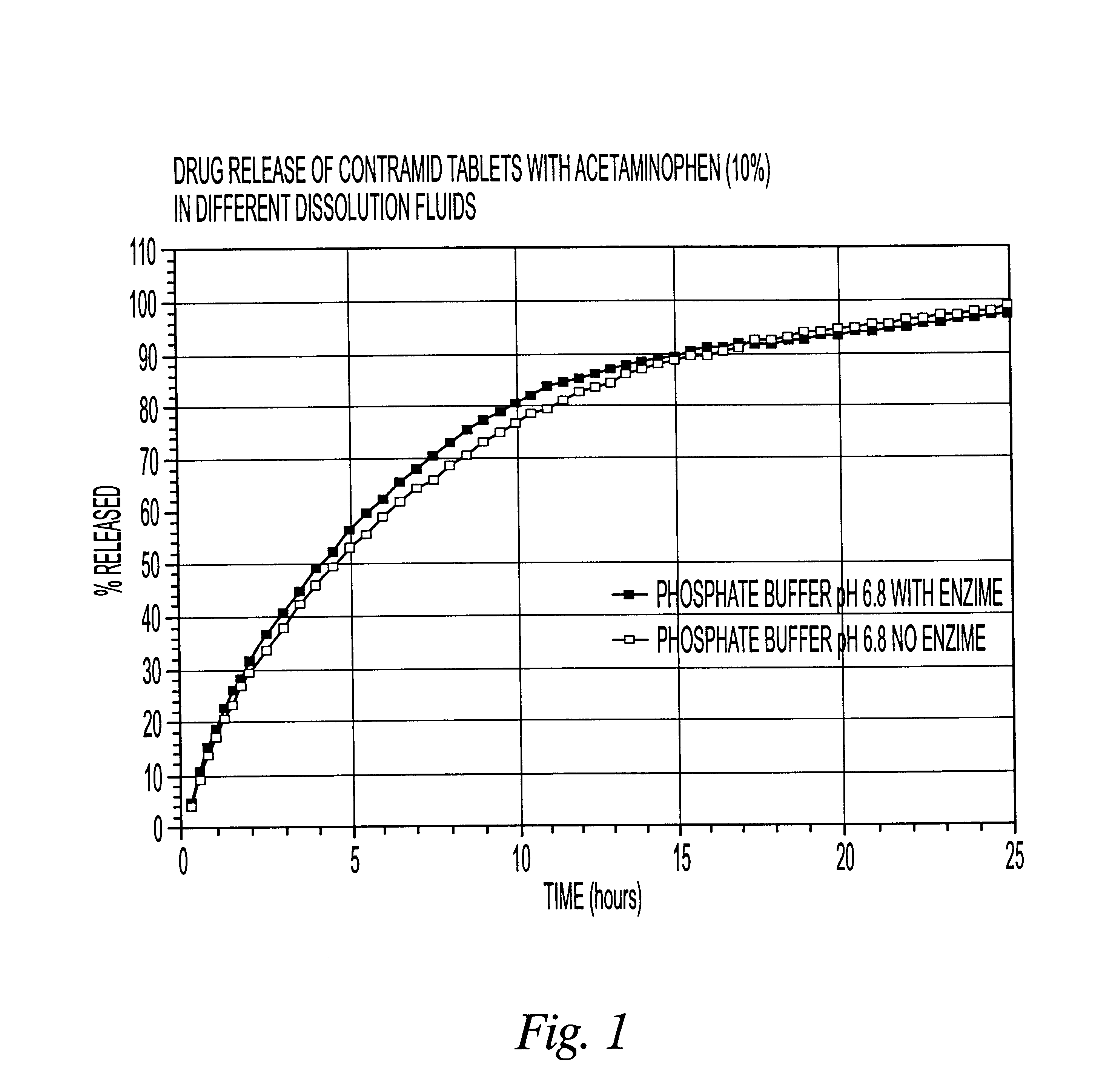Cross-linked high amylose starch resistant to amylase as a matrix for the slow release of biologically active compounds
a technology of amylase and amylose starch, which is applied in the field of cross-linked high amylose starch resistant to amylase as a matrix for the slow release of biologically active compounds, can solve the problems of tablets that are not resistant to amylase, are easy to degrade by intestinal polysaccharidases, and have significant matrix swelling, etc., to achieve rapid formation, reduce swelling in water, and reduce the effect of degradation
- Summary
- Abstract
- Description
- Claims
- Application Information
AI Technical Summary
Problems solved by technology
Method used
Image
Examples
example 1
10% acetaminophen tablets
CLA (x=3.25) 90%
Acetaminophen 10%
Method
The CLA used in this example was cross-linked with sodium trimetaphosphate. The drug was mixed with CLA in a bag for 2-3 minutes and the blend was compressed using a tablet press with round 5 / 16 inch toolings. The weight of the tablets was 200 mg.
example 2
10% pseudoephedrine tablets
CLA (x=3.25) 90%
Pseudoephedrine HCl 10%
Methods
The CLA used in this example was cross-linked with sodium trimetaphosphate. The drug was mixed with CLA in a bag for 2-3 minutes and the blend was compressed using a tablet press with round 15 / 32 inch toolings. The weight of the tablets was 500 mg.
Test Procedure
The dissolution release profile of the tablets was determined using a USP type III dissolution apparatus. The dissolution system was set up with different dissolution fluids that mimic the GI tract environment with or without enzyme (4500 I.U. / L). One international unit (I.U.) will liberate 1 mg of maltose from starch in three minutes at pH 6.9 at 20.degree. C. The drug release was recorded spectrophotometrically with an automated sampling system.
PUM
| Property | Measurement | Unit |
|---|---|---|
| weight | aaaaa | aaaaa |
| temperature | aaaaa | aaaaa |
| temperature | aaaaa | aaaaa |
Abstract
Description
Claims
Application Information
 Login to View More
Login to View More - R&D
- Intellectual Property
- Life Sciences
- Materials
- Tech Scout
- Unparalleled Data Quality
- Higher Quality Content
- 60% Fewer Hallucinations
Browse by: Latest US Patents, China's latest patents, Technical Efficacy Thesaurus, Application Domain, Technology Topic, Popular Technical Reports.
© 2025 PatSnap. All rights reserved.Legal|Privacy policy|Modern Slavery Act Transparency Statement|Sitemap|About US| Contact US: help@patsnap.com



